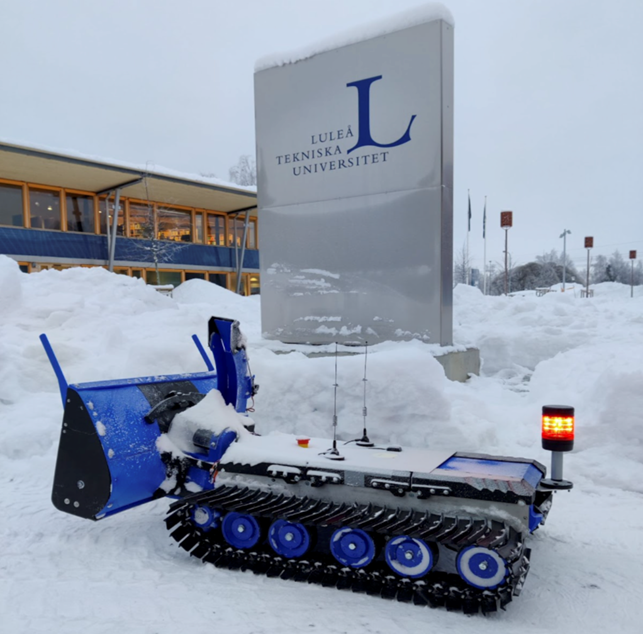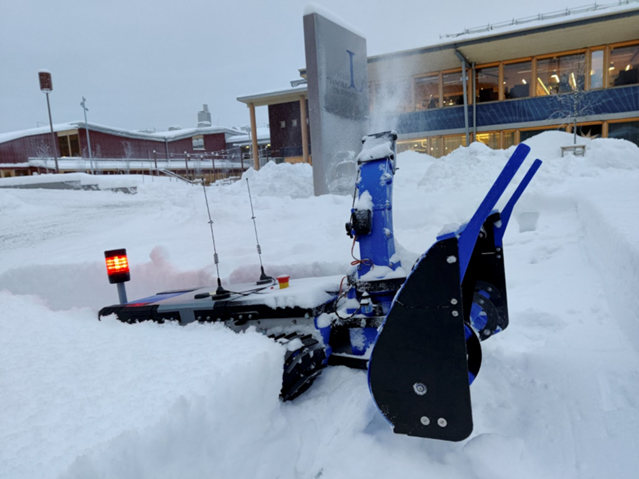Successful demonstration clears the way for more safer, more efficient snow removal
For anyone who lives as far north as Luleå, clearing snow is a serious business. Keeping roads, pavements and cycleways free of snow occupies a significant post in municipal budgets. In areas where ice roads provide an important wintertime transport link, there are also important safety considerations to snow removal operations. Shortly before Christmas, a group of students at Luleå University of Technology (LTU) presented what could be the first step toward a fleet of autonomous robots that are able to clear snow safely and efficiently. All that is required is for a user to trace the area they would like cleared on a map.

The demonstration was the culmination of three months of project work for the fifth year students who used the project as an opportunity to apply knowledge and experience acquired throughout courses in electronics, automatic control, robotics, computer science and cyber physical systems. Behind the successful demonstration was a System of Systems consisting of a weather station connected to a Raspberry Pi, a Firefox plug-in to allow users to identify the area to be cleared, a pathfinder algorithm and the robot snow blower. The Eclipse Arrowhead Framework ensured efficient communication and coordination between these separate systems.
A key to efficient snow removal is understanding weather conditions. Wind direction is most important, because removing snow only to have it blow back into the path that has just been cleared is, obviously, a pointless exercise. In this project, the Raspberry Pi allowed the weather station to connect with the Eclipse Arrowhead Framework and provide data on wind speed and direction. For ease of use, the students created a Firefox plug-in that allowed users to simply trace the area to be cleared on a map. The plug-in then converted the traced area into coordinates and sent them to a pathfinder algorithm. The pathfinder algorithm used the coordinates and weather information to identify optimal snow clearing lanes and communicated these to the robot snow blower.

The project relied on Eclipse Arrowhead’s three core systems – authorization, orchestration and the service registry. Anton Johansson was responsible for implementing the Eclipse Arrowhead Framework and explained that beyond the limited scope of this project there are also opportunities to incorporate other elements of the Eclipse Arrowhead Framework. The secure onboarding procedure, for instance, would allow new robots to automatically join an already existing fleet. For now, however, with all systems functioning to allow the robot to successfully clear snow, this part of the project has reached its conclusion. Future steps include a PhD study which will include creating a digital twin of the robot, where other elements of the Eclipse Arrowhead Framework will play an important role.

